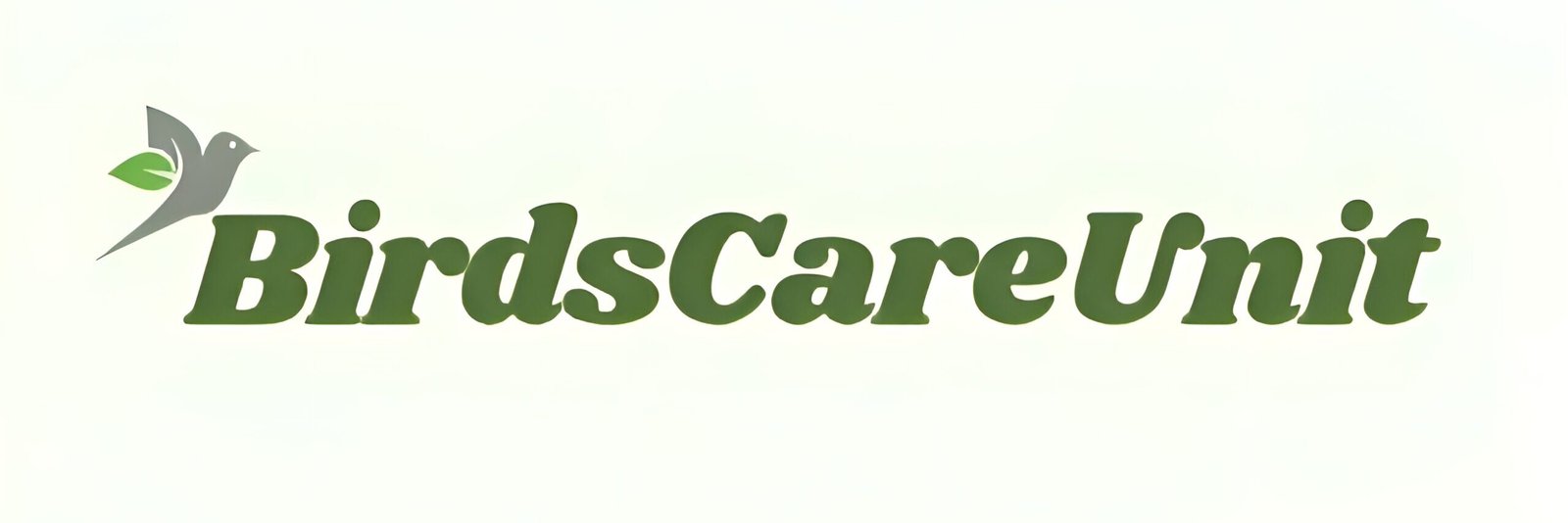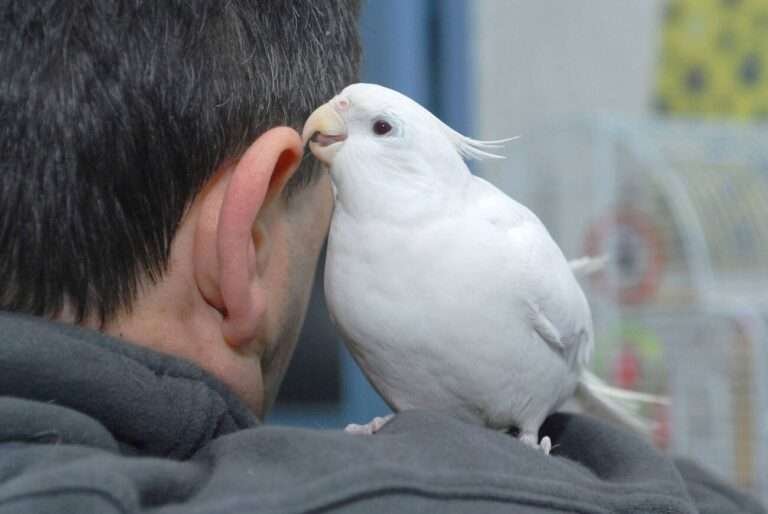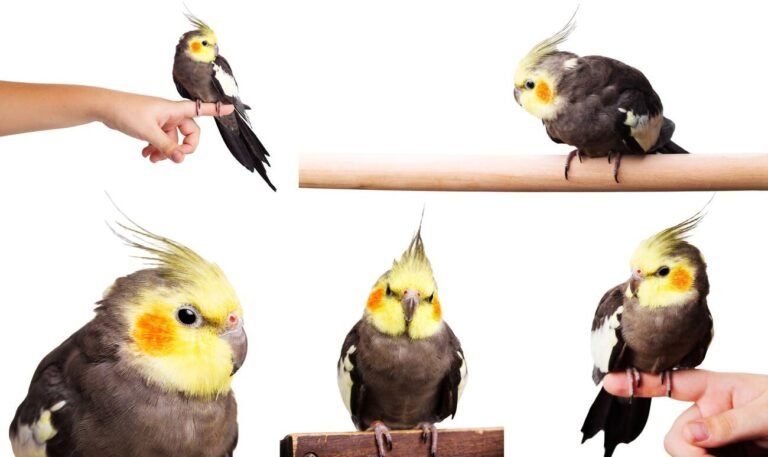How to Tame a Cockatiel

Introduction
I have created a pet bird farm on the rooftop of my house, where I rear cockatiels, lovebirds, parakeets, and Barbary doves. Recently, I’ve developed an interest in finches and Java sparrows, and I’m planning to buy some in the coming days. However, my favorite birds are still cockatiels because of their nature, habits, calmness, and sweet sounds.
I currently have over fifty cockatiels, but only two of them are tamed. Their names are Tweety and Pretty. Through the process of taming them, I’ve gathered a lot of knowledge about how to bond with cockatiels. Now, I have a clear understanding of how to tame a cockatiel at home.
That’s why I’ve decided to share my experience in this blog. I believe those who are thinking about taming a cockatiel will find this information very helpful. So, let’s talk about how to tame a cockatiel!
Section 1: Creating a Safe Haven for Your Cockatiel
Choosing the Right Environment
One of the first steps in taming your cockatiel is ensuring that it feels safe and secure in its new home. Before you even begin interacting closely with your bird, focus on creating an environment that supports its comfort and well-being.
Cage Size and Location:
Choose a spacious cage that gives your cockatiel room to stretch its wings. A good minimum size is 20×20 inches, but bigger is always better.
Place the cage in a quiet, low-traffic area of your home. While cockatiels enjoy socializing, too much noise or movement can cause stress, especially during the early stages of taming.
Perches and Toys:
Provide a variety of perches, including natural wooden branches and rope perches. These are not just for comfort but also aid in foot health and help prevent sores.
Keep your cockatiel mentally stimulated with toys that encourage foraging, chewing, and climbing. Rotate these toys regularly to maintain interest.
Lighting and Temperature:
Ensure your cockatiel is exposed to natural light during the day and has access to a shaded area for rest.
Avoid placing the cage in direct sunlight or drafty areas, as extreme temperatures can be harmful.
Allowing Time to Adjust
When you first bring your cockatiel home, give it some time to get used to its surroundings. Don’t try to handle it right away—this could cause fear and anxiety. Instead, spend a few days simply sitting near the cage and talking to your bird in a soft voice. This way, your cockatiel will start to recognize you as a friendly presence.
Section 2: Building Trust through Communication
Cockatiels, like most intelligent birds, are highly responsive to vocal communication. In the early stages of taming, your voice will be one of the most important tools for building trust with your bird.
Talking to Your Cockatiel
Spend several minutes each day talking to your cockatiel. You don’t have to say anything specific; just let your bird hear the sound of your voice. Over time, your cockatiel will start associating your voice with safety and comfort.
Pro tip: Use a calm, steady tone when talking to your bird. Avoid sudden loud noises or raised voices, as these can startle your cockatiel.
Recognizing Vocal Cues
Pay attention to the sounds your cockatiel makes. Chirping, whistling, or mimicking sounds are good signs that your bird is feeling more comfortable. Silence, on the other hand, could mean your cockatiel is still adjusting or feeling uncertain.
Section 3: Understanding Cockatiel Behavior
Cockatiels communicate not just through sounds but through their body language as well. Observing these behaviors will help you understand how your bird is feeling at any given moment, which is crucial in the taming process.
Key Behavioral Cues to Watch For
- Relaxed Posture: If your cockatiel is sitting calmly with its feathers flat against its body, this is a sign of comfort and relaxation.
- Curiosity: A cockatiel that starts exploring its cage, pecking at toys, or coming closer to you when you approach is showing signs of curiosity and comfort.
- Fear or Anxiety: Watch for signs like puffed-up feathers, rapid breathing, or hiding in a corner. These are indicators that your cockatiel is stressed or fearful.
Personal Story: When I first started taming Pretty, she was very cautious and would sit in the farthest corner of the cage whenever I approached. Over time, by simply sitting nearby and talking softly, I noticed her behavior shift. She became more curious and started coming closer to inspect me whenever I sat by her cage.
Section 4: Beginning to Handle Your Cockatiel
Introducing Your Hand
After your cockatiel has become accustomed to your presence and your voice, you can begin to introduce physical interaction. Start by slowly placing your hand inside the cage with a treat in your palm. Don’t try to force your bird to come to you—let it approach in its own time.
Patience is Key: The first time you offer your hand, your cockatiel may ignore it or even move away. This is completely normal. Taming takes time, and rushing the process can set you back.
Reward-Based Training
When your cockatiel starts showing interest in your hand and eventually steps onto it, offer immediate positive reinforcement in the form of treats or gentle praise. Over time, your bird will associate your hand with good things and will become more comfortable with being handled.
Pro tip: Use millet spray or sunflower seeds as high-value rewards during taming sessions. These are some of a cockatiel’s favorite treats and will encourage them to trust you more quickly.
Section 5: Holding and Bonding with Your Cockatiel
Gently Holding Your Bird
When your cockatiel is comfortable stepping onto your hand, you can gradually move towards holding it. Use slow, deliberate movements, and avoid any sudden jerks or tight grips. Allow your bird to rest comfortably on your hand while you speak to it softly. This will help reinforce the bond you’ve started building.
Avoiding Common Mistakes
- Over-handling: While it’s important to handle your cockatiel regularly to build trust, be mindful not to overwhelm it with too much interaction, especially in the beginning.
- Forcing Interaction: If your cockatiel seems resistant, give it more time. Forcing contact can break the trust you’ve worked so hard to build.
Section 6: Exploring Outside the Cage
Gradual Exploration
Once your cockatiel is comfortable with being handled, you can start allowing it to explore outside of its cage. Start by letting it step onto your finger and gently guiding it out of the cage. Allow your bird to explore its surroundings at its own pace while making sure the area is safe.
Cockatiel-Proofing Your Home
Before allowing your bird to explore, make sure the environment is bird-friendly. Remove any potential hazards such as open windows, ceiling fans, or sharp objects.
Encouraging Indoor Flying
Cockatiels benefit from flying as a form of exercise, which helps strengthen their immune and digestive systems. Once they’re comfortable outside the cage, you can let them fly indoors under supervision. Make sure to cockatiel-proof the room by closing doors and windows, and removing any dangerous objects.
Section 7: Personalizing the Taming Experience
Every cockatiel is unique, so it’s important to adjust your taming techniques based on your bird’s personality. Some birds may be more playful, while others may be more cautious. Take the time to observe your cockatiel’s preferences and tailor your interactions accordingly.
Tweety vs. Pretty: In my experience, Tweety was more playful and curious right from the start, while Pretty was more reserved and cautious. I used different approaches for each of them, which ultimately helped me build strong bonds with both.
Section 8: Overcoming Challenges
Patience is Crucial
Taming a cockatiel can be a slow process, and setbacks are normal. There may be days when your bird is less cooperative or seems disinterested. Don’t get discouraged. Consistency and patience are essential to building trust with your cockatiel.
Addressing Fearful Behavior
If your cockatiel seems particularly anxious or fearful, take a step back and reduce the intensity of your interactions. Allow your bird to have more space, and focus on calming, non-invasive activities like talking softly or sitting near the cage.
Conclusion: Embrace the Journey of Taming
Taming a cockatiel is a rewarding journey that requires patience, dedication, and understanding. By creating a safe environment, communicating regularly, and progressing gradually through trust-building steps, you can build a strong and loving bond with your cockatiel.
Remember, each bird is unique, and the taming process will vary. Celebrate the small victories and cherish the moments as you get to know your feathered companion. The effort you put into taming your cockatiel will be rewarded with a loyal and affectionate friend for years to come.



